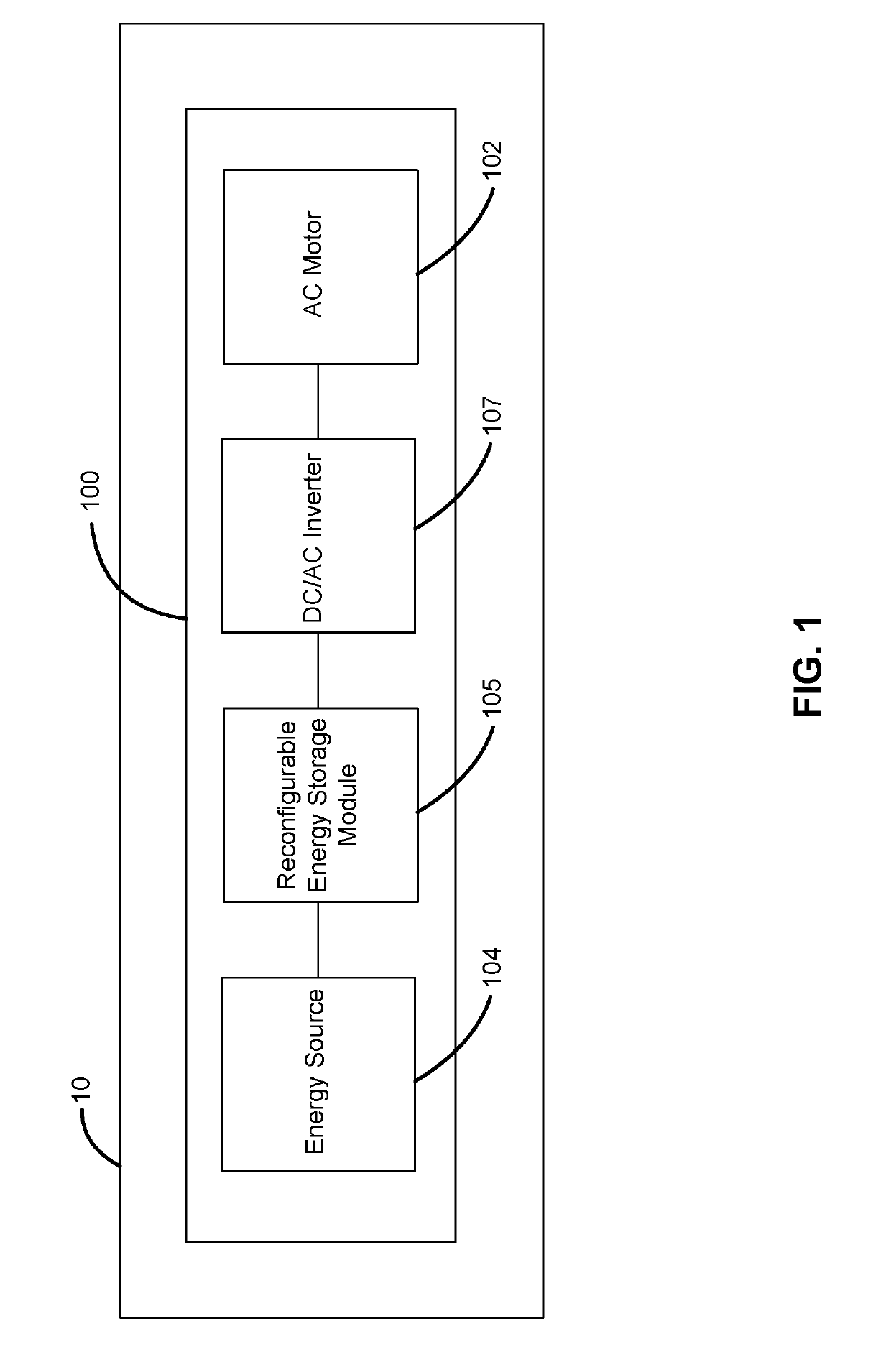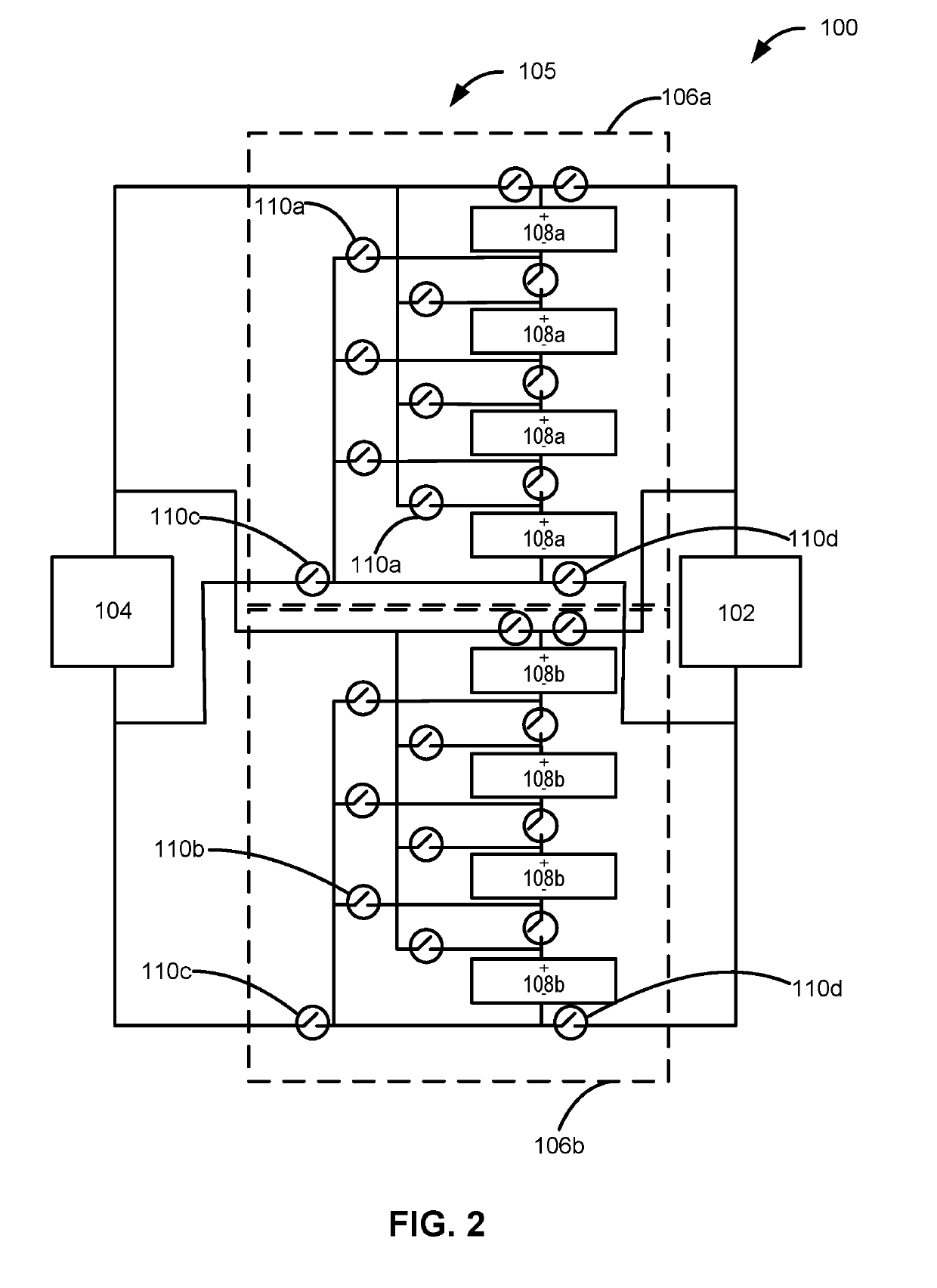High reliability hybrid energy storage system
a hybrid energy storage and high reliability technology, applied in parallel/serial switching, electrochemical generators, battery/cell propulsion, etc., can solve the problems of a large amount of short-term power draw from the grid, fuel cells are typically high in energy density and low in power density when compared, and the process is relatively time-consuming and laborious
- Summary
- Abstract
- Description
- Claims
- Application Information
AI Technical Summary
Benefits of technology
Problems solved by technology
Method used
Image
Examples
Embodiment Construction
[0024]The present description provides novel systems and methods of using cost-effective, low-voltage fuel cell systems in weight sensitive, high reliability, high efficiency, high voltage traction applications by utilizing a switch mode battery system. The approach increases reliability, adds redundancy, and minimizes parasitic components such as DC-DC converters that add weight, reduce reliability, and increase system losses.
[0025]With initial reference to FIG. 1, an aircraft 10 comprises an energy storage and power delivery system 100. In various embodiments, aircraft 10 comprises an unmanned aerial vehicle caused to be moved by one or more traction motors. In other embodiments, aircraft 10 can be a passenger or cargo aircraft or a helicopter powered by one or more traction motors. Moreover, aircraft 10 may comprise any suitable vehicle that is caused to move, in whole or in part, by an asynchronous motor or A / C motor. Although described herein in connection with aircraft, this d...
PUM
| Property | Measurement | Unit |
|---|---|---|
| voltage | aaaaa | aaaaa |
| voltage | aaaaa | aaaaa |
| voltage | aaaaa | aaaaa |
Abstract
Description
Claims
Application Information
 Login to View More
Login to View More - R&D
- Intellectual Property
- Life Sciences
- Materials
- Tech Scout
- Unparalleled Data Quality
- Higher Quality Content
- 60% Fewer Hallucinations
Browse by: Latest US Patents, China's latest patents, Technical Efficacy Thesaurus, Application Domain, Technology Topic, Popular Technical Reports.
© 2025 PatSnap. All rights reserved.Legal|Privacy policy|Modern Slavery Act Transparency Statement|Sitemap|About US| Contact US: help@patsnap.com



